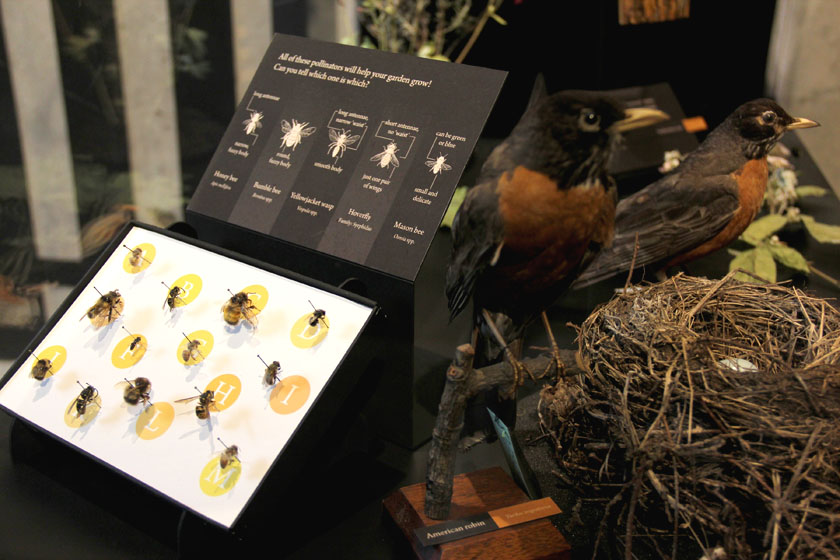One of my favourite mounting projects at the Beaty Biodiversity Museum was preparing specimens and creating mounts for case displays in a 2014 feature exhibit called Backyard Biodiversity. The exhibit featured many kids’ books written and illustrated by Canadian authors and artists, along with some of their framed art and activity tables for visitors. It also included five cases, each 44” long x 23” wide x 56” tall, featuring specimens from a local backyard, a park, the forest, a beach and the ocean. The particular case I’m writing about contained what you might see in your back yard: pollinators and birds, and various garden flowers that get pollinated.
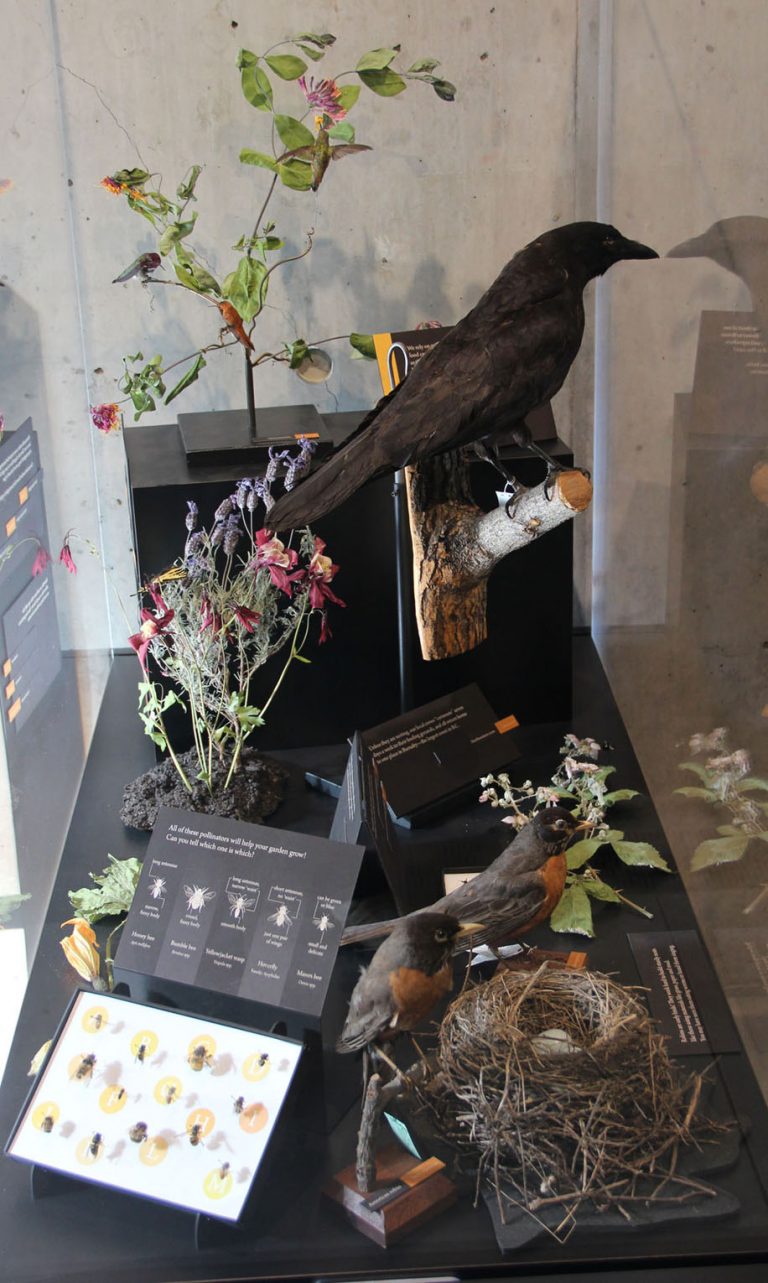
The first step was our lovely herbarium people collecting plants, under permit, in spring. The next step was to dry them, keeping their 3-dimensional shapes.
How do you get 3D flowers? Well, florists have used silica gel desiccants for a long time to create lovely preserved blossoms, so the Beaty Museum acquired some and carefully stuck at least eight different species of plants into air sealed plastic bins and bags. An important thing to remember when using silica gel is to wear plastic gloves and a respirator to protect your lungs. After three weeks I uncovered beautifully dried and coloured honeysuckle, lavender, columbine, squash and blackberry leaves and blossoms, along with more species for the other cases.
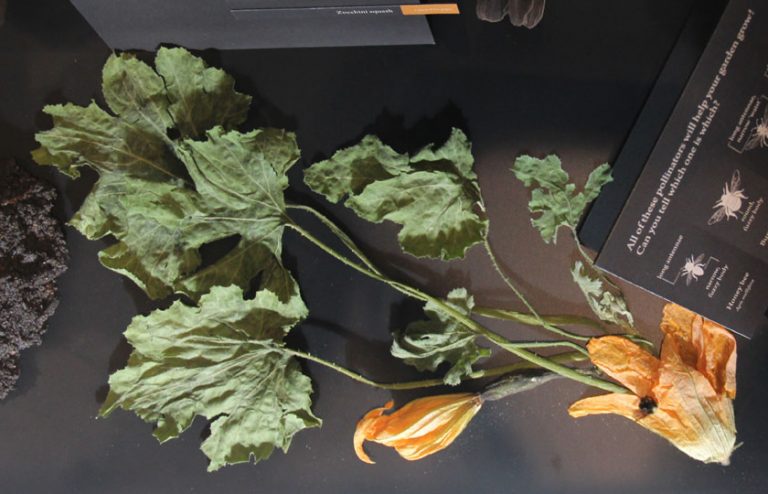
The next trick was how to mount the plants in ways that allowed other specimens like insects and hummingbirds to interact with them. The most challenging mount I had to create was a brass one that could house both the honeysuckle and three hummingbirds. I started with an old brass stem that had been discarded years ago as a base for this mount. I changed the brass rod already coming out of the tubular base, curving it to one side, while creating other branches that curled outwards and looked like honeysuckle vines. These were silver soldered on to the main stem, after which I added patina to protect the brass and give it the colour of honeysuckle stems.

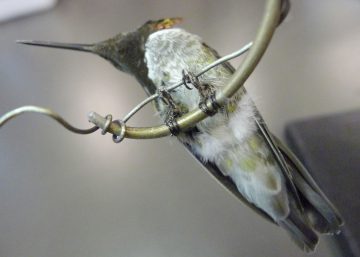
Then it came to mounting the hummingbirds. I had two Anna’s hummingbirds (which are native year-round in BC) and one Rufous (a migratory species), each of which had been dried in their poses by students in the specimen preparatory lab. I carefully threaded a 26 gauge black copper wire just behind both of the sitting birds’ tummies in order to have something to wire them to their “purches” on the brass vines. Then I threaded their tiny curled toes around another thin brass wire that got wrapped around the vines, looking like an extension of the honeysuckle itself. While these two males faced each other down, unlike in real life, they weren’t madly fighting!
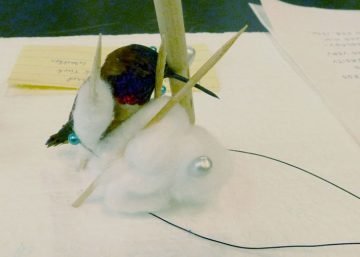
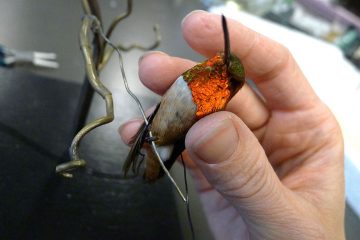
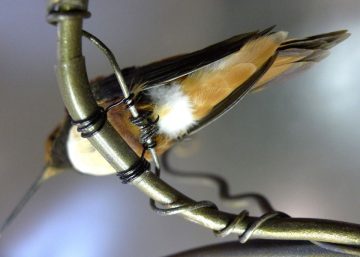
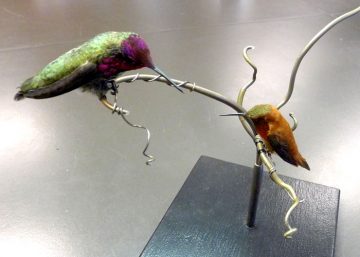

The third hummingbird was posed as if she was flying, already dried with a long wire threading out of her lower belly. Clearly she would be drinking the lovely nectar from the honeysuckle, heedless of the males sitting beneath her.
You may wonder how it is that these birds could be held by such tiny wires. Hummingbirds only weigh between 3.2 and 4.5 grams when alive (and a 5 mL teaspoon of sugar weighs 4 grams), they were much lighter when stuffed and dried. Fine wires were more than enough to keep them anchored and aloft, and the flying female was easily mounted to have her beak just inside one of the dried flowers like she would in real life.
Once the birds’ mounts were finished I carefully threaded dried honeysuckle vines through the winding brass vines. They looked so natural that I’ve had many people ask if I’d dried the honeysuckle to create the whole stalk! The fact that this is a very visible mount that fools visitor’s eyes is very pleasing to me. If I can fool a viewer, clearly I’ve done a good job!
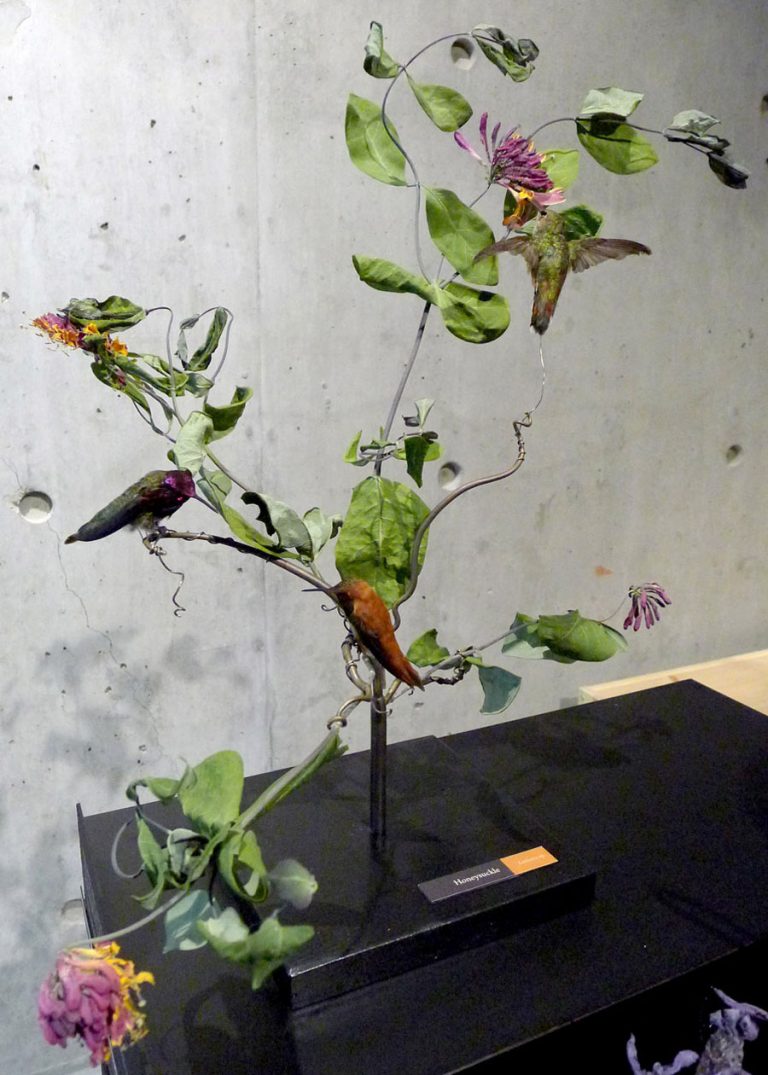
Other mounts in this Back Yard case included dried lavender and columbine that were planted in real dirt that had been baked and then frozen to kill any seeds, fungi or bacteria in it. I then mixed it with a clear acrylic gel to create a sticky goo just thick enough to mould into shape and hold flower stems upright in it. These flowers were being happily perused by a flying swallowtail butterfly.
There were also squash and blackberry flowers being visited by bees, along with a whole tray full of other pollinators. I also made a standing mount for a crow, and a foam underlay for a robin’s nest with both parent robins nearby.

This case was so popular it ended up staying on the collections floor for several years after the Backyard Biodiversity exhibit ended. While it was usually on display in the tetrapod collection area, we occasionally moved it into the herbarium collection as well, if only to keep visitors guessing where it was. Long after the leaves had all turned yellow, despite Beaty’s controlled light exposure, the BackYard case was finally retired.
